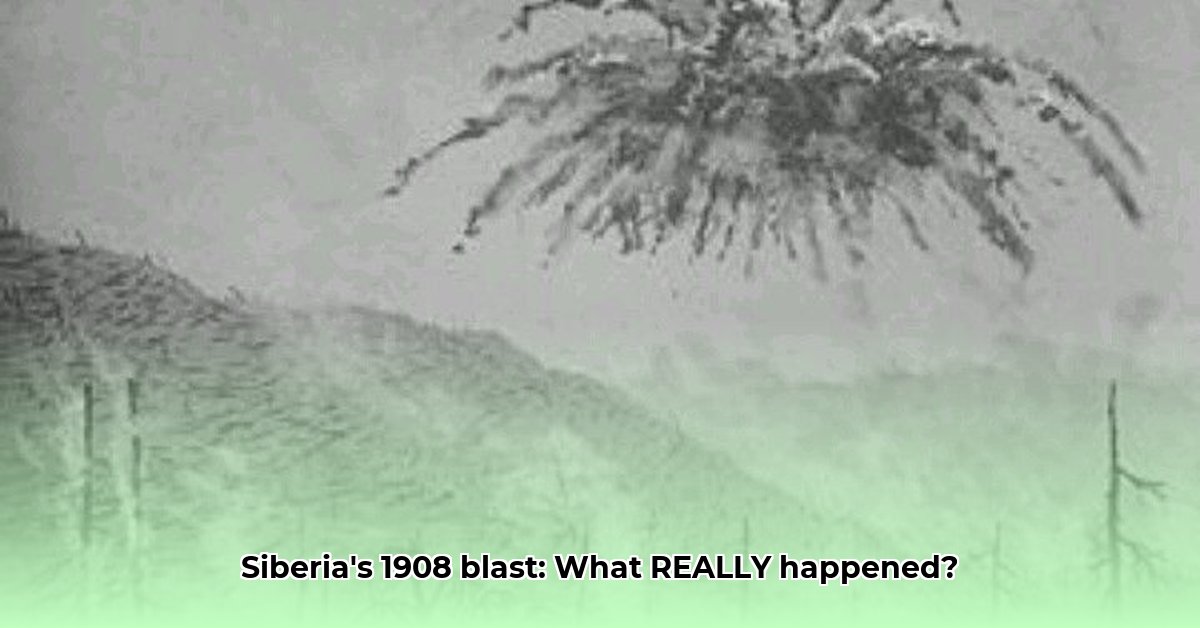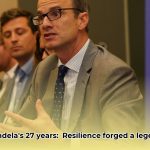Imagine a blast so immense it leveled countless trees across an area larger than a major city, and yet, no impact crater. This is the enigma of the Tunguska Event, a perplexing explosion that shook Siberia in 1908. Was it a space rock detonating in the atmosphere, a disintegrating comet, or something far stranger? For another unsolved historical mystery, check out this fascinating letter. This is the story of one of the greatest unsolved mysteries in modern history, filled with compelling eyewitness accounts, ongoing scientific debates, and critical implications for our planet’s future. Let’s explore the clues, the radial pattern of fallen trees, the elusive quest for a crater, and the competing theories that strive to solve this century-old puzzle.
The Tunguska Event: The Day a Mysterious Explosion Devastated Siberia
A Siberian Shockwave: June 30, 1908
Picture a remote summer morning in Siberia. Suddenly, a flash brighter than the sun tears across the sky, followed by a colossal boom that reverberates across the landscape, shaking the earth for hundreds of miles. This wasn’t a storm, an earthquake, or a volcanic eruption, but the Tunguska event – an aerial explosion of mysterious origin that has baffled scientists for over a century. Envision this happening over a major metropolitan area – the devastation would be almost unimaginable. What unleashed this incredible explosion, and how did the unique atmospheric conditions exacerbate its destructive effects?
The Big Picture: A Blast from Above
The prevailing scientific theory suggests that a massive space object – likely an asteroid or comet – entered Earth’s atmosphere and detonated high above the surface. The estimated energy released in this airburst was equivalent to approximately 10-15 megatons of TNT, comparable to hundreds of Hiroshima atomic bombs. This powerful blast flattened approximately 80 million trees across an area of over 2,000 square kilometers, creating a distinctive “butterfly” pattern visible even today. This pattern strongly suggests an aerial explosion, with the trees radiating outwards from a central point. Subsequent scientific investigations have uncovered microscopic glassy particles, composed of melted rock and extraterrestrial materials, further strengthening the theory that a space object was involved.
However, the absence of a large, easily identifiable impact crater continues to puzzle researchers. Where did the space object go? Why did it explode in the air instead of impacting the ground? This is a crucial point of contention that continues to fuel scientific debate and underscores the unusual nature of the event, as well as the challenges in conclusively determining its cause.
Theories Abound: Asteroids, Comets, and Exotic Ideas
The most widely accepted theory posits that either a stony asteroid or a fragile icy comet entered Earth’s atmosphere and exploded in a spectacular airburst. The lack of a definitive impact crater is a key element fueling ongoing debates. While the majority of evidence suggests an airburst, some researchers hypothesize that a smaller fragment of the object might have survived the explosion and created a small, now-obscured crater in Lake Cheko, a body of water located near the epicenter. Still others propose different scenarios, from the space rock fracturing higher in the atmosphere to the involvement of much more exotic phenomena. This is a high-stakes scientific detective story with multiple plausible suspects – each with its own set of strengths and weaknesses.
An alternative, yet still scientifically plausible, idea suggests that the object might have been a relatively fragile comet, composed primarily of ice and dust. This would naturally explain the lack of a large, traditional impact crater, as a comet would disintegrate much more easily in the Earth’s atmosphere due to its volatile composition. The rapid disintegration of a comet could also account for the unusual atmospheric phenomena witnessed by local populations, such as unusually bright nighttime skies and glowing clouds.
Eyewitness Accounts and Early Investigations
The remoteness of the Tunguska region and the limited communication infrastructure of the time meant that initial reports of the event were slow to reach the outside world. Early scientific investigations faced significant logistical challenges, but the collection of eyewitness testimonies from local Evenki people and Russian settlers provided crucial insights into the nature of the event. These accounts paint a vivid picture of a blindingly bright light, a deafening sound described as being like cannon fire, and a wave of intense heat that scorched the landscape. However, stories varied considerably based on the distance from the epicenter, making the task of piecing together a comprehensive narrative an ongoing scientific challenge.
The Ongoing Search for Answers in the 21st Century
Today, scientists continue to investigate the Tunguska event using advanced technologies and interdisciplinary approaches. Researchers are actively studying the affected area, analyzing soil and tree samples, and developing sophisticated computer simulations to better understand the dynamics of the explosion. Each newly discovered clue, from microscopic particles to subtle changes in tree growth patterns, helps us refine our understanding of this extraordinary event and, crucially, develop strategies to protect our planet from similar future threats.
What Tunguska Teaches Us About Planetary Defense
The Tunguska event serves as a stark reminder of the potential dangers posed by near-Earth objects (NEOs) – asteroids and comets whose orbits bring them close to our planet. It unequivocally highlights the critical need for robust early warning systems capable of detecting potentially hazardous NEOs well in advance of a potential impact. Furthermore, it underscores the urgency of developing effective deflection strategies that could be deployed to alter the trajectory of an incoming object, preventing a catastrophic collision. The Tunguska event, therefore, is far more than a historical mystery; it is a crucial wake-up call to the global community, urging us to take the threat of NEOs seriously and invest in planetary defense initiatives.
The Future of Tunguska Research: Collaboration and Unanswered Questions
The mystery surrounding the Tunguska event is not yet definitively solved, and significant gaps in our knowledge remain. Future research efforts will depend heavily on international collaboration to advance our collective understanding. The sharing of data, expertise, and resources across international borders will be essential to uncovering more elusive clues. Advances in remote sensing technologies, coupled with sophisticated computer modeling, hold the promise of revealing crucial insights into the precise composition of the object, the complex atmospheric effects of the explosion, and the potential influence of Lake Cheko as a possible impact crater. Moreover, the challenges encountered in investigating the Tunguska event raise important questions about how we can improve data collection and analysis in remote and inaccessible regions to better prepare for and investigate similar events in the future. The enduring mystery surrounding the Tunguska event adds to its scientific allure, driving researchers to push the boundaries of scientific inquiry in pursuit of definitive answers.
How did the Tunguska event’s shallow trajectory affect atmospheric energy dissipation?
Key Takeaways:
- The Tunguska event, a massive airburst over Siberia in 1908, remains a captivating scientific puzzle due to its unique characteristics and lack of a traditional impact crater.
- The event’s shallow trajectory, estimated to be between 5 and 30 degrees from the horizontal, played a crucial role in the way energy was released into the atmosphere.
- A shallow trajectory maximized atmospheric interaction, leading to a more gradual and widespread energy dissipation pattern, resulting in the extensive forest devastation observed across a vast area.
The Siberian Blast: A Shallow Dive into Destruction
Imagine the Siberian sky on June 30th, 1908. A brilliant flash illuminates the horizon, followed moments later by a powerful shockwave that flattens trees for hundreds of square kilometers. This was the Tunguska event – a celestial body exploding in the Earth’s atmosphere, resulting in a cataclysmic airburst. The key question is: how did the Tunguska event’s shallow trajectory affect atmospheric energy dissipation, and how did this affect the overall damage pattern on the ground?
The object, now believed to be either a stony asteroid or a fragment of a fragile icy comet, entered the Earth’s atmosphere at a relatively shallow angle. To visualize this, imagine skipping a flat stone across the surface of a calm lake, rather than throwing it directly downwards. The Tunguska object’s shallow trajectory significantly maximized its interaction with the Earth’s atmosphere.
Atmospheric Fireworks: Energy Release in the Air
The shallow angle of entry meant that the object spent a considerably longer period traversing the atmosphere, gradually releasing its immense kinetic energy through intense friction and atmospheric compression. This was not a singular, instantaneous explosion, but rather a prolonged and sustained burst of energy released over a period of several seconds. This energy wasn’t focused at a single, concentrated point on the ground, but instead was distributed more horizontally across a vast geographical region. The resulting blast wave radiated outwards from the epicenter of the airburst, flattening millions of trees in a distinctive radial pattern – a telltale sign of a high-altitude airburst. The notable absence of a substantial impact crater further supports this hypothesis, indicating that the object disintegrated completely in the atmosphere before reaching the ground.
The Mystery Remains: Lingering Unanswered Questions
Despite decades of intensive scientific research and numerous expeditions to the Tunguska site, some fundamental aspects of the event remain shrouded in mystery. What exactly was the composition of the object – a relatively dense stony asteroid or a more fragile icy comet? Even the precise trajectory and the exact altitude of the airburst remain subjects of ongoing debate. These uncertainties inevitably influence estimations of the object’s original size and the total amount of energy it ultimately unleashed into the atmosphere. What novel technologies and scientific approaches could help us determine the composition and structure of similar objects before they enter our planet’s atmosphere?
Implications for Planetary Defense: Learning from the Past to Protect the Future
The Tunguska event provides a compelling real-world example of the devastating impact that an airburst can have, highlighting that significant damage can occur even without the creation of a traditional large impact crater. This realization poses new challenges for planetary defense strategies, emphasizing the need to develop detection and mitigation techniques that are effective against both direct impactors and airburst events. We need to gain a deeper understanding of how an object’s size, composition, and trajectory affect the way energy is released and dissipated within the atmosphere. The Tunguska event acts as a stark and enduring reminder of the constant threat posed by near-Earth objects (NEOs) and the importance of investing in research and technologies to protect our planet from future cosmic impacts.
Eyewitness Accounts and Early Investigations- What Did People See? Unveiling the Human Experience of the Tunguska Event
The vast and sparsely populated Siberian wilderness bore witness to a colossal atmospheric airburst on June 30, 1908 – an event that flattened an estimated 80 million trees across an area larger than many major metropolitan regions. To fully understand the scale and impact of this extraordinary event, we need to ask: Eyewitness Accounts and Early Investigations- What Did People See? How did the local population experience this cataclysmic event, and what crucial clues did their testimonies provide to early scientific investigators?
The Blast’s Impact: A Sensory Assault on a Grand Scale
Eyewitness accounts, collected from local Evenki herders and Russian settlers, paint a vivid picture of a truly terrifying event. Many described seeing a blinding flash of light, so intense that it caused temporary blindness. Some witnesses reported observing a large, ball-like object streaking across the sky, leaving behind a trail of smoke and dust. The subsequent shockwave was described as deafening, akin to the sound of a massive artillery barrage, and was followed by a palpable tremor that shook the ground beneath their feet. People were thrown to the earth by the force of the blast, houses were damaged or completely destroyed, and livestock and wild animals were killed. The air shimmered with intense heat, and many reported feeling a burning sensation on their skin, even at considerable distances from the epicenter.
Gathering the Pieces: Initial Scientific Investigations in a Remote Land
Early scientific investigations were severely hampered by the event’s remote and inaccessible location, as well as the limited resources and logistical challenges of the time. However, a series of Soviet expeditions in the 1920s and 1930s, led by the intrepid mineralogist Leonid Kulik, provided crucial documentation of the scale of the devastation. Kulik and his team meticulously surveyed the radial pattern of flattened trees, confirming that the explosion originated in the air, rather than from a direct ground impact. The puzzling absence of a traditional impact crater, however, continued to confound investigators and fueled a wide range of alternative theories. What new methodologies and advanced technologies could enhance our understanding of the blast radius and energy distribution based on the analysis of historical eyewitness reports and the patterns of destruction?
Competing Theories: Asteroid or Comet? The Ongoing Debate
The leading scientific theory posits that a relatively small asteroid or a fragment of a comet entered the Earth’s atmosphere at a shallow angle, resulting in a powerful airburst that released a tremendous amount of energy. However, other hypotheses have been proposed over the years, including more exotic explanations involving cometary fragments, antimatter, or even miniature black holes. What would the sky have looked like if a larger number of people had witnessed the event from different vantage points? And how can we use modern scientific techniques to reconcile the often contradictory accounts provided by eyewitnesses? These are the questions that continue to drive research into the Tunguska event.
The Human Toll: Beyond the Trees, Remembering the Victims
While the scientific focus has primarily been on the physical and environmental effects of the Tunguska event, recent research suggests that the number of human fatalities directly attributable to the explosion may have been significantly underestimated in previous studies. Official estimates typically cite only a handful of deaths, but anecdotal evidence and historical records suggest that the actual number may have been much higher. Furthermore, the long-term health effects experienced by those who survived the initial blast, such as hearing loss, respiratory problems, and psychological trauma, remain largely unstudied. The true scale of the human disaster remains uncertain, and it is essential to remember that behind the scientific data and technical analyses lies a poignant story of human experience and suffering.
Lake Cheko: A Possible Impact Crater? A New Chapter in the Investigation
Decades after the event, in 1999, a controversial hypothesis emerged suggesting that Lake Cheko, a small, unusually shaped lake located approximately 8 kilometers from the epicenter of the explosion, might actually be an impact crater formed by a fragment of the Tunguska object. This provocative hypothesis added a new and exciting dimension to the Tunguska mystery, prompting renewed scientific interest and further investigation. If confirmed, the Lake Cheko hypothesis could provide valuable clues about the size, composition, and trajectory of the Tunguska object. It serves as a powerful example of how scientific research on the Tunguska event continues to reveal new and unexpected information, even after more than a century of study.
Lessons Learned: Planetary Defense and the Future of Humankind
The Tunguska event serves as a stark and irrefutable reminder of the ever-present dangers posed by near-Earth objects (NEOs). A similar event occurring over a densely populated area in the 21st century would have catastrophic consequences, potentially resulting in millions of casualties and widespread economic disruption. The Tunguska incident has significantly heightened the urgency and importance of improving NEO detection capabilities, developing effective planetary defense strategies, and fostering greater international collaboration to address this global threat. Understanding the Tunguska event and its potential implications is crucial for ensuring the long-term survival and prosperity of humankind.
Key Takeaways:
- The Tunguska event was a powerful atmospheric airburst, not a direct ground impact, making it a unique and challenging scientific puzzle.
- Eyewitness Accounts and Early Investigations- What Did People See? are essential for understanding the event’s true scale, its immediate impact on the local population, and the long-term human consequences.
- The exact nature of the object that caused the explosion remains uncertain, with the scientific debate between the asteroid and comet hypotheses ongoing.
Planetary Defense Implications- What Can We Learn From Tunguska to Safeguard Our Future?
The Day the Sky Exploded Over Siberia: A Cosmic Wake-Up Call
On June 30th, 1908, the remote Siberian wilderness experienced an unprecedented explosion, estimated to be equivalent to 10-15 megatons of TNT. Millions of trees were flattened in a radial pattern, and the sky ignited with an otherworldly glow. This cataclysmic event, known as the Tunguska event, offers crucial insights into the Planetary Defense Implications of near-Earth object (NEO) impacts and airbursts. What lessons can we learn from this historical event to better protect our planet from future cosmic threats?
The Mystery Deepens: Unraveling the Scientific Puzzle of Tunguska
The absence of a significant impact crater at the Tunguska site perplexed early investigators, fueling a wide range of scientific theories and alternative explanations. Was it a direct impact, an atmospheric airburst, a disintegration of a fragile comet, or even an unusual meteoroid shower? The application of the scientific method, involving meticulous observation, data collection, and hypothesis testing, has been crucial in gradually unraveling this complex puzzle.
Detailed analyses of the impact area revealed a distinctive “radial blowdown pattern” in the fallen trees, providing strong evidence of an aerial explosion. Microscopic analyses of soil samples uncovered shock-metamorphosed minerals, further supporting the involvement of a high-energy impact event. These findings have helped to narrow down the range of plausible explanations and provide a clearer picture of what transpired over Siberia in 1908.
What Was It? Asteroid or Comet? The Ongoing Quest for Identification
The prevailing scientific hypothesis points towards an atmospheric airburst caused by a relatively small asteroid or a fragment of a comet. The object, likely ranging in size from tens to hundreds of meters in diameter, entered the Earth’s atmosphere at a shallow angle and exploded miles above the ground, releasing a tremendous amount of energy. The fragmented remains of the object were likely scattered across the landscape, making them difficult to recover. The airburst itself caused the extensive devastation, flattening millions of trees and generating a powerful shockwave. The Lake Cheko hypothesis, suggesting that a fragment of the object may have created a small impact crater, remains a subject of ongoing debate and investigation.
Determining the precise nature of the impactor, whether it was a rocky asteroid or an icy comet, is a crucial element in understanding the dynamics of the Tunguska event and its implications for planetary defense. The composition and physical properties of the object would have significantly influenced its behavior in the atmosphere, including its fragmentation pattern, its energy deposition profile, and the overall extent of the damage. These are all vital factors to consider when planning for potential future impact events.
Planetary Defense Implications- What Can We Learn From Tunguska to Safeguard Our Future?
The Tunguska event serves as a stark demonstration of
- The Shocking History of Lobotomy: A Nobel Prize Nightmare - August 1, 2025
- Eleanor Roosevelt: A Champion of Human Rights: Enduring Legacy - July 31, 2025
- The Great Emu War: Australia’s Bizarre Military Failure: 1932’s Unlikely Defeat - July 31, 2025















